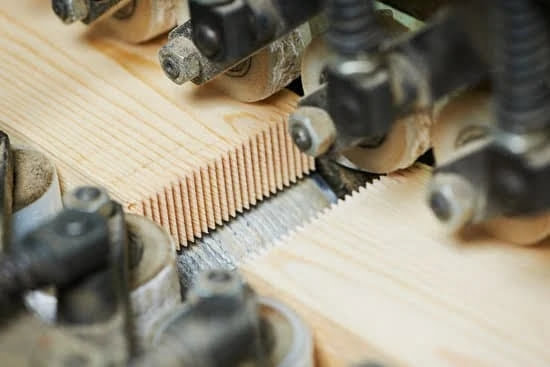Introduction
Using a woodworking bench vise can be an extremely beneficial tool when it comes to woodworking projects. With a bench vise, the user can easily and securely clamp pieces of wood together while they perform various modifications or functions, such as drilling pilot holes or cutting pieces of wood with a saw. The versatility and convenience of the vise make it an essential tool for your DIY projects. Benefits of these vises include:
• Increased Support ” A bench vise provides additional support so that you can have better control over your workpieces during any job.
• Versatility ” Not only is the vice highly adjustable for different thicknesses and sizes, but it can also mount on most surfaces due to the included clamps.
• Safety ” With the ability to lock tight onto objects, there is no risk of them slipping during use which could cause injury or damage.
• Efficiency ” By giving you a secure grasp on your project, there’s no wasted motion needed in order to hold down objects by hand.
• Aesthetics – Most woodworking vices feature heavy duty steel construction with a smooth black finish that gives them both strength and aesthetic value in any project area!
Types of Woodworking Bench Vises
C-Clamp Woodworking Vise: This is the most popular option, which functions by having a C-shaped clamp with a threaded screw that tightens the clamp against the bench or work surface securely. It is easy to use and suitable for quickly attaching and removing vise jaws to the side of any wooden bench.
Parallel Jaw Woodworking Vise: This type of woodworking vise has two parallel sliding jaws that can be set up or down. The main advantage of this option is that it gives you more control when making precise cuts with virtually no play in the jaw movement.
End Vise: End vises are designed to attach only one end of the workpiece to the workbench. Generally, these vises are adjustable from side to side, allowing for better control over larger pieces.
Face Vise: Face vises provide improved access for woodworkers who are looking for face clamping options when working on items like doorway trim. Rather than just gripping onto one edge of a piece, these vises grip two edges for increased stability and secure fitment.
Pipe Clamp Woodworking Vise: Pipe clamps are a great addition to your workspace due to their versatility and ease of use. These clamps make it easy to adjust their size so they can accommodate larger items while still providing a dependable hold.
Installing a Woodworking Bench Vise
Safety is paramount when installing a woodworking bench vise. To ensure your safety, always wear protective gear such as goggles and gloves. Additionally, use a measuring tape to make sure the vise is installed evenly and straightly in relation to the bench so that it holds secure when you’re clamping a piece of wood. Make sure the block has sufficient backing beneath it on both sides to support the bolts that secure it in place, as too shallow a backward will mean the screw will be unable to push properly into the wood. When attaching screws and bolts, use an electric drill or screwdriver to drive them in slowly and avoid over-torquing them which can cause damage or loosen other parts of your workbench. Once the vise is secure, test out its functionality by clamping a piece of scrap wood into it before attempting any major projects. By following these simple steps you can ensure your experience with your Woodworking Bench Vise is as safe and successful as possible.
Maintenance and Care of a Woodworking Bench Vise
Tools Needed For Maintenance & Repair of a Woodworking Bench Vise:
1. Hammer ” used to hammer in wedges or secure rods when adjusting the vise’s jaws.
2. Wrench ” used to loosen and tighten nuts when necessary.
3. Screwdriver ” used to adjust screws that result in tighter or looser holds for specific pieces of wood.
4. WD40 or other lubricant – used for removing rust and dirt from movable parts, as well as loosening stubborn nuts and bolts on the vise’s frame structure.
5. Wire Brush ” useful for cleaning away rust and debris from around critical moving parts of the bench vise, allowing it to run smoothly and efficiently .
6. Welding Rod ” can be useful for patching defective welds on older vises that continue working but have an old weld that needs reinforcement to prevent further problems down the road out of usage.
Techniques for Using a Woodworking Bench Vise
Sanding with a Bench Vise: A bench vise is an excellent tool for holding wood pieces securely in place while sanding. To prepare the wood, place it firmly in the vise and use a block or plane to plane or dress the surface. Be sure to move the plane in one direction to minimize the risk of splintering. After dressing the surface, move onto sanding. Place sandpaper on top of the wood piece and rub back and forth over the length of the wood piece until desired results are achieved.
Shaping with a Bench Vise: A woodworking bench vise can also be used for shaping difficult or intricate shapes from wood. Securely fasten the wood pieces into the jaws of your bench vise. For optimal control, run your hand over your workpiece while using either a chisel, coping saw, ban saw, or any other cutting tools you may have available. This way you can easily guide your cutting tools along various curves or contours as needed when shaping your workpiece.
Polishing with a Bench Vise: You can also use a bench vise for polishing your woodworking projects. Place your project securely in between two jaws of the vise and attach buffing wheels onto an electric motor. Apply pressure to make sure that wheel comes in contact with all angles of the workpiece and begins to spin up to full speed. Begin polishing at low speeds until you have achieved desired results while continuing to apply pressure throughout the entire process.
Conclusion
At the end of this guide, we hope that readers have a better understanding of how to use woodworking bench vise. Surely, there are more ways and tips to speed up your work benches with other tools and techniques, but having a bench vise in your workshop is invaluable. We invite you to share any experiences that you may have when using your bench vise and how it has helped improve your projects. From the amount of detail you can pay to joint angles to making things fit just right ” let us know what tricks you’ve learned or creative ways the bench vise has been a tool for success!

Hi everyone! I’m a woodworker and blogger, and this is my woodworking blog. In my blog, I share tips and tricks for woodworkers of all skill levels, as well as project ideas that you can try yourself.





